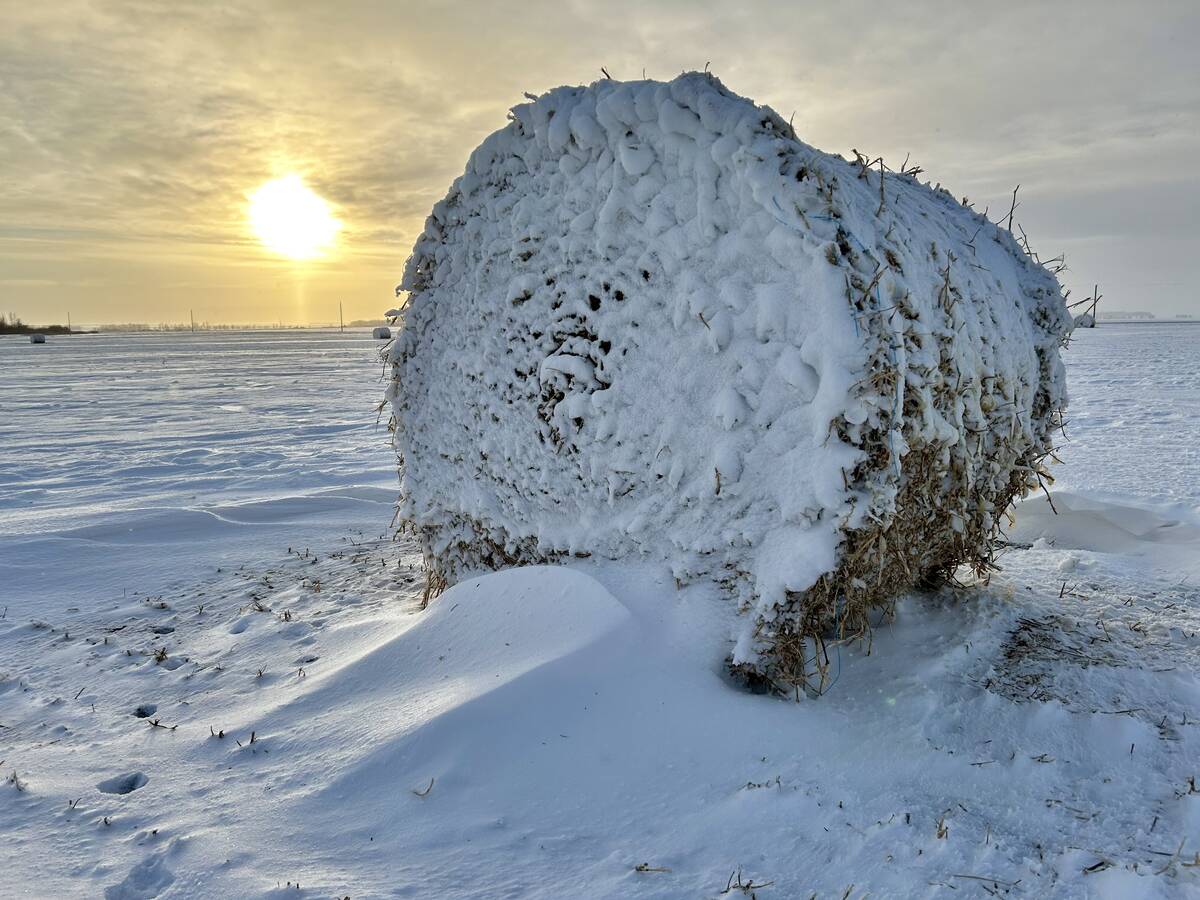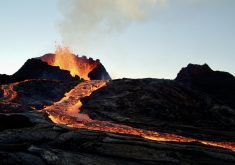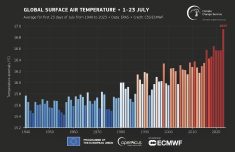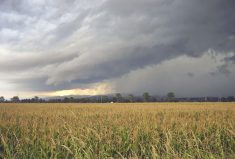As spring begins to transition into summer, I like to revisit what I find to be one of the most interesting weather topics — thunderstorms.
As temperatures begin to climb and moisture (hopefully) begins to flow northwards, the ingredients come together to develop thunderstorms. So far this year we haven’t seen much thunderstorm activity, but as summer draws closer it is only a matter of time. While I have talked about this topic pretty much every year, due to the significance of these events, I feel it is important to keep reviewing and updating this information.
Read Also

Prairie winter snowfall forecast 2025-2026
How much snow should farmers in Alberta and elsewhere on the Canadian Prairies expect for the rest of December 2025 and into January-February 2026?
To start with, I feel we need to talk about one of my weather pet peeves, which is when people mix up weather watches and weather warnings.
Basically, when we are talking about thunderstorms, a severe thunderstorm watch is when the potential exists for severe thunderstorms to occur. This means that severe thunderstorms have not yet formed. There may be some thunderstorms around, and you need to be wary of them, but so far none of them have become severe.
A severe thunderstorm warning means that severe thunderstorms have developed and conditions, which meet the severe criteria, have been recorded either directly by observers or by radar. When you hear a warning, it means you need to take immediate precautions.
Severe thunderstorm watches are typically issued when all the ingredients for severe storms are in place, but forecasters are not sure where — or sometimes even if — thunderstorms will develop. An analogy you can use is a pot of water on the stove. If you turn on an element and put on a pot of water, eventually it will boil. But the big question is: Where will that first bubble form and break away from the bottom of the pot? That would be our thunderstorm, you knew it was going to form, exactly where is the hard part.
So just what are the ingredients for severe thunderstorms?
First of all you need rising air, and to get that you need heat, or rather, you need a large difference in temperature between two areas. There are a couple of ways you can achieve this difference in temperature. One way, which most people are familiar with, is to have a very hot day.
But just having a very hot day does not mean that there is a large difference in temperature. To get thunderstorms on a hot day you need to have cool air aloft (up above the ground).
When this occurs, the hot air at the surface begins to rise and encounters cool air as it continues to rise up. This means that our rising air will remain warmer than the air around it and will continue to rise. The cooler the air around it, the faster it goes up. The faster it goes up, the stronger the storm (typically).
Now sometimes we can get severe thunderstorms when we don’t have particularly warm air at the surface.
Two different scenarios can play out when this happens that can still lead to severe thunderstorms. The first scenario would be that there is very warm air a few thousand feet up from the ground. This warm air then has cold air above it, and just like the hot day on the ground, this warm air in the upper atmosphere can rise up giving us elevated thunderstorms.
The second scenario is when there is a strong contrast of warm and cool air at the surface, or in other words, we have some type of front cutting through an area. On one side of the front, it is cool and on the other side, it is warm. The cold air acts like a wedge and forces the warm air up. Sometimes this occurs when a cold front is moving into an area, so the day starts off warm and then the cold air pushes in, lifting the warm air up in front of it, giving us thunderstorms. The other way is when warm air is moving into a region. The day begins cool and then storms develop as the warm air rises up over the cool air as it moves into the region.
Simply having a big difference in temperatures will not give you a thunderstorm, or at least, will not give you a severe thunderstorm. There are still a couple more ingredients needed.
The next key ingredient is water vapour, or humidity. It takes energy to evaporate water, so the more water vapour there is in the air the more potential energy there is. To get at this energy the water vapour needs to be changed back into a liquid form (that is, it needs to condense). As our warm air rises, it cools, and as it cools, water vapour will begin to condense. When it condenses it releases the energy it absorbed when it evaporated. This energy is released in the form of heat.
Our rising air is cooling as it rises, but not as fast as the air around it, so it continues to rise. Then condensation starts taking place, which releases heat into the air. This makes our rising air even warmer than the air around it, so it rises even faster. Now it is starting to sound like we have everything in place for a severe storm — but not quite.
If you have air continually rising up, eventually the amount of air accumulating up at the top of the storm will become so great that it just has to fall back down again, wiping out the storm in the process. To get around this problem we need some kind of vent at the top of the storm that takes away all the rising air that is accumulating there. We need a strong jet stream of air over top of the storm, which will help to ‘suck’ away the accumulating air.
There, we now have the key ingredients for a severe storm. But like any good chef, Mother Nature has additional ingredients she can use to make some storms truly awesome. We will look at those, as well as our gentle ‘garden-variety’ thunderstorms over the next few issues.
Daniel Bezte is a teacher by profession with a BA (Hon.) in geography, specializing in climatology. He operates a computerized weather station near Birds Hill Park, Man. Contact him with your questions and comments at [email protected] map shows the total amount of precipitation that has fallen over the Prairies this past half-year. You can see that dry conditions have prevailed across most regions. The driest weather has been over the eastern Prairies, with below-average values stretching to the west and northwest into north-central Alberta.














